Winter hiking in the Catskills is mostly magical, tranquil beauty but uncomfortable if you’re ill prepared and occasionally terrifying. I’ve been conveying my winter hiking experiences here under the Outdoors section on Upstate Dispatch. Or, rather, I’ve been writing about what could possibly go wrong should you decide to attempt a Catskills high peak when it’s 10˚F and weather conditions are a fickle master. True to my British nature, I seem to have created A Pessimist’s Guide to Winter Hiking or a Pessimist’s Guide to Conquering Winter Summits. Last year, I decided to attempt to hike all 35 Catskills peaks over 3500ft in order to join the Catskills 3500 Club and there are four extra peaks required in the winter. What I discovered after having hiked those four is that you can see a lot more of the landscape when it has lost most of its foliage. You literally get the lay of the land. So I’ve been continuing down the list instead of doing the sensible thing and waiting for the spring thaw. However, winter hiking is not for the uncertain.
You can’t wear cotton because you’ll sweat all the way to the summit and, after four hours of hiking, you’ll stand in two feet of snow and eat your sandwich, during which time your cotton t-shirt that is soaked in sweat becomes inexplicably icy under your jacket. Lowering your body temperature when you’re tired makes you vulnerable and hikers should wear wool or moisture wicking fabrics. You might think it’s a good idea to take off your gloves and take some pictures of the stunning panoramic views of the mountains not realizing that the temperature is about 10 degrees lower at the summit, and suddenly you’ll lose feeling in your fingers, jump around yelling “frostbite!” and shove your hands into your companion’s armpits. Your water will freeze in your backpack. Your knees will not thank you on the way down, nor will your ankles. In fact, they will dislike you for days. The only (joint-) saving grace here is that you will do a great deal of sliding down on ice like a penguin in Ice Age and landing on soft, thick snow. To hike in winter is to take a spare everything. A spare everything is essential. Never underestimate the joy of waterproofing, which you won’t if you’ve attempted one icy stream crossing too many and are forced to trudge back to the car with your boots making obscene noises.
Talking of icy stream crossings, the Seager Trail has many in the first mile or two: too many to count if you’re focusing on trying to cross them by hopping across on the rocks that jut out of the water. At the weekend, the streams were higher than usual and the water rushed quickly leaving few rocks to step on above the water line. When you’re tired it’s too easy to slip over and in. Catskill Mountaineer warns that it’s dangerous to attempt this hike when the water was this high as some one of the crossings, like the swimming hole at the first mile, are five feet deep, but I did not read it until afterwards. Big Indian is better left for the spring thaw because of this and also because, when there’s two feet of snow on the summit, it’s nearly impossible to find the sign-in canister that’s .25 miles off the trail on the summit and absolutely the last thing you want to do is get lost up there.
I’ve written about the Seager Trail before because it’s the first hike I did in the Catskills and published a post on my Eagle hike last year. The trail has the beautiful aforementioned swimming hole that is deep and frigid enough in hot summers to cool off in after a hike. Served by a thundering waterfall, it has shallows and rock pools that taper off into a flat area that’s perfect for a picnic. Getting back to the snow: this pool is also served by a stream coming from another direction and if you must cross that stream when it’s high as it was last weekend you might end up with wet socks or worse.
The Seager trail leads to a handful of Catskills 35 peaks in either direction. From the parking area at the end of Dry Brook Road, (7A), you can hike the Seager trail to the Big Indian trail, to the Pine Hill West Branch Trail and then, turn north to do Eagle, Balsam and onto Belleayre Mountain. Turn south on the PHWB to do Big Indian and Biscuit Brook to the parking area on Frost Valley Road. If you can take two cars and park one at the Seager Trail and one in Pine Hill, it’s possible to do two or three peaks in one day. A superb hike to plan for the spring.
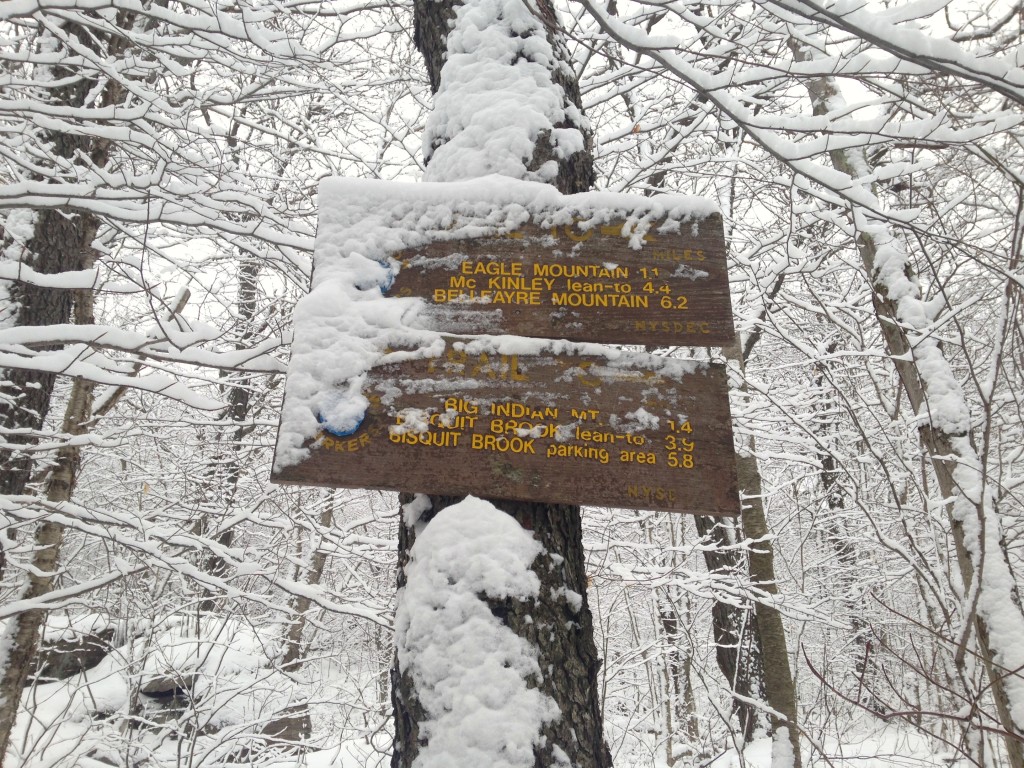
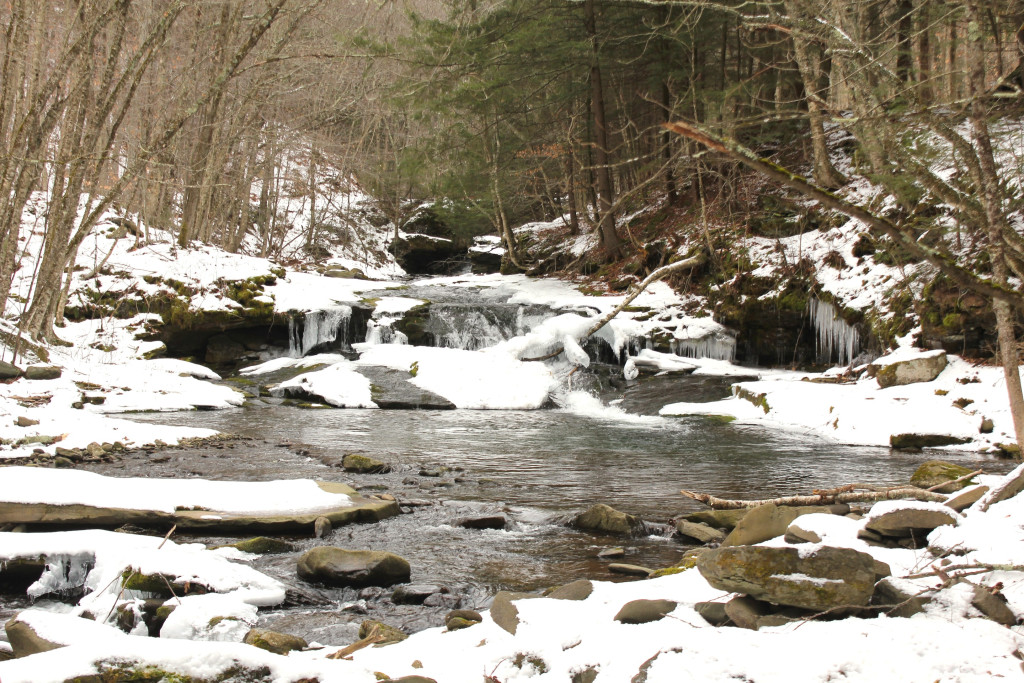
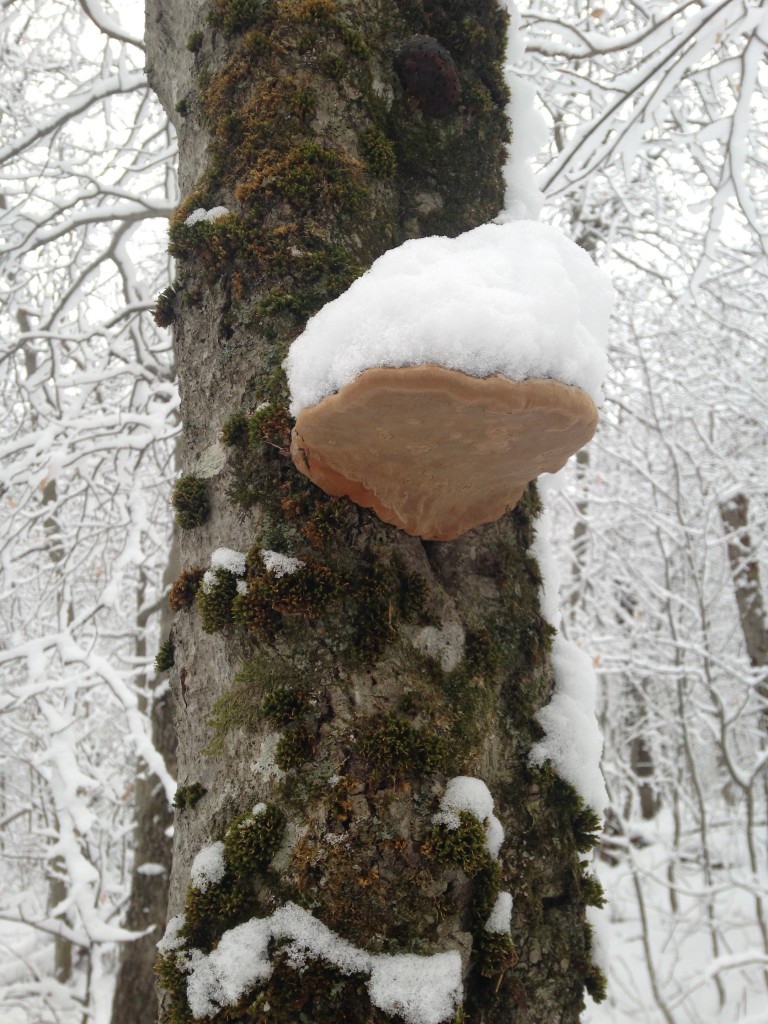
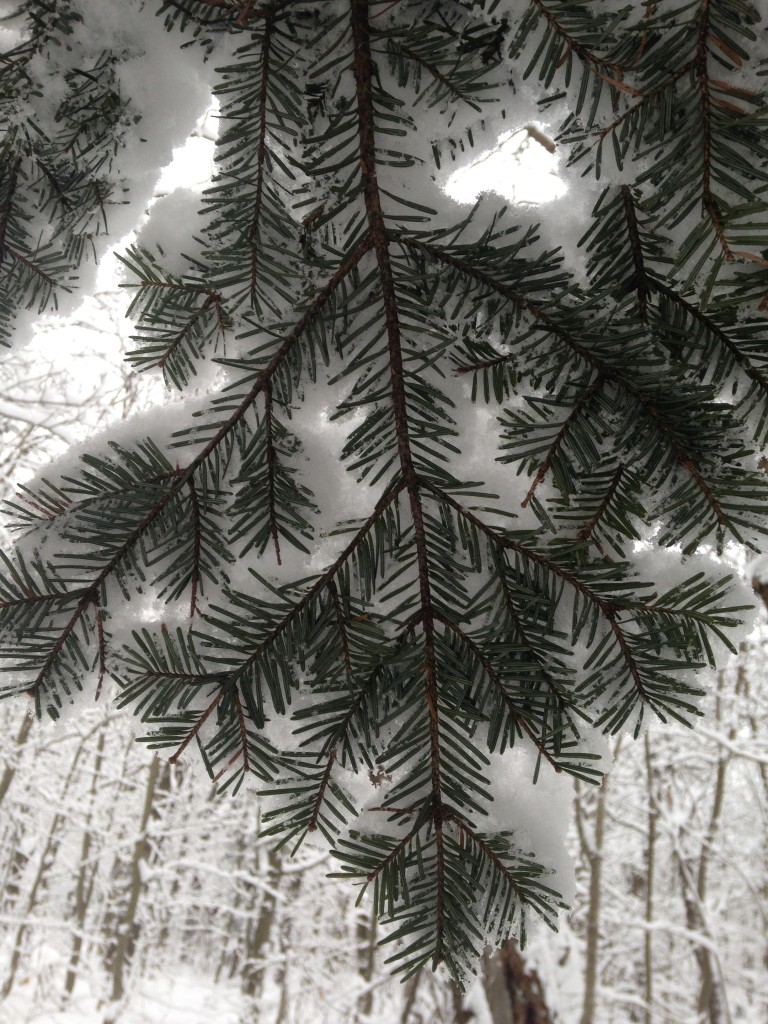
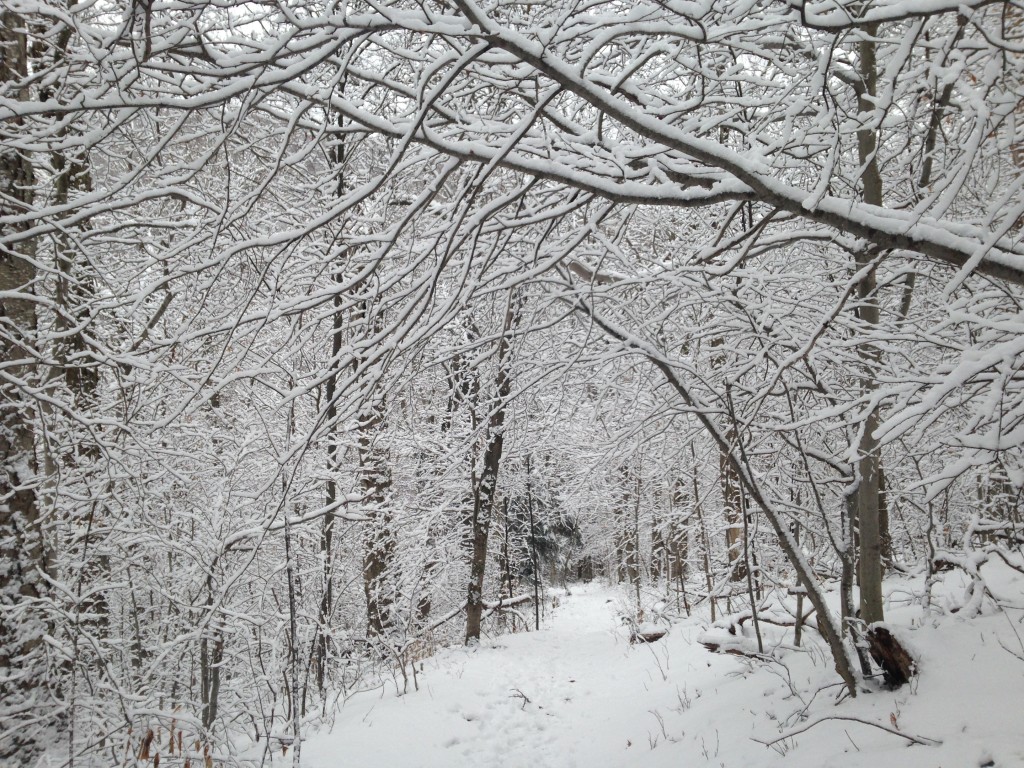
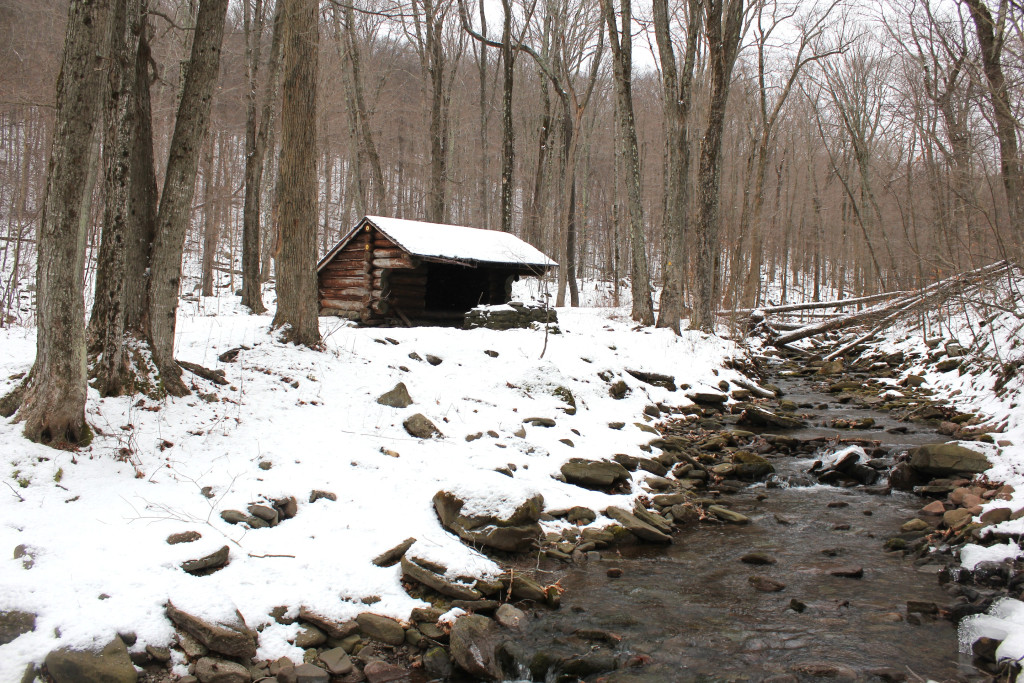
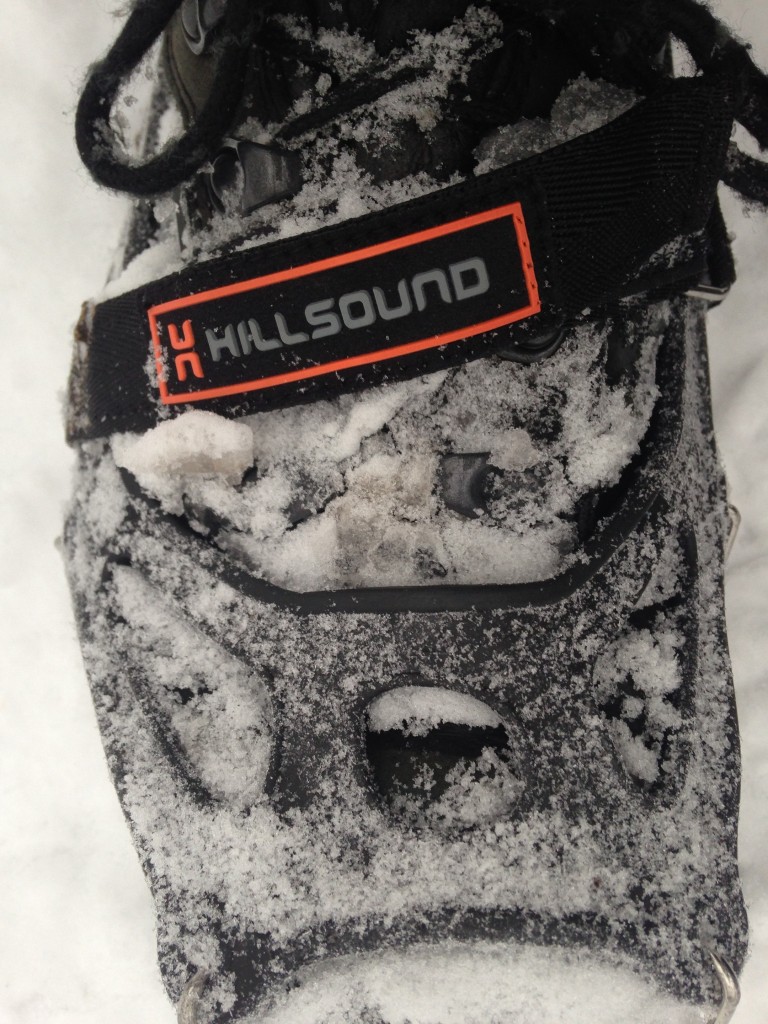
Now I have finally noticed that your writing skills are concordant with your photographic abilities. Wonderful article. Years ago, when the leaves were out in the late spring (the terrain was relatively dry that day), I took a quick trek: Belleayre–Balsam–Big Indian–Eagle–Hemlock and Fir Mts.(may not have them in the proper order). I came out by Winisook Lake; and, it was a cardiovascular thing more than anything else, as the lush leaves inhibited the extraordinary view. My winter way of insulating is a bit different than yours; I like a thin layer of cotton next to my skin as I do not like the feel of wool or synthetics there. I follow that with wool or a synthetic; and, end this mummification with something waterproof and; if I can afford it, breathable. I wore these togs primarily in the woods logging or cutting firewood.